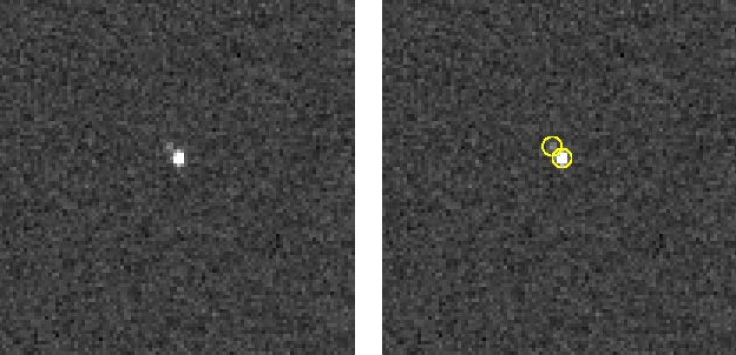NASA’s New Horizons Captures Charon, Pluto’s Largest Moon, In Latest Image [PHOTO]
NASA’s New Horizons spacecraft spotted Charon, the largest of Pluto’s five moons, using its onboard telescope. The images of Charon are the first-ever images of Pluto’s moon from the spacecraft.

The New Horizon spacecraft is currently halfway through its long journey from Earth to Pluto. The spacecraft will observe Pluto, its five moons and the Kuiper Belt, similar to an asteroid belt that extends beyond the orbit of Neptune and could contain hundreds of dwarf planets similar to Pluto, NASA reports. The New Horizon spacecraft is expected to arrive at Pluto around July 2015. At that time, New Horizons will pass 7,750 miles from Pluto’s surface, and the onboard telescopes will be able to examine surface features in detail, the Johns Hopkins press release reports.
The photos of Charon were captured by the spacecraft’s Long Range Reconnaissance, or Lorri, a high-resolution telescope, NASA reports, and marks the beginning of New Horizons’ ability to study the dwarf planet. The images were captured on July 1 and July 2, while the spacecraft was approximately 550 million miles from Pluto. In the main image, Pluto can be seen as the bright dot in the center, while Chron is the fainter dot just to the left of the dwarf planet.
Hal Weaver, New Horizons project scientist from the Johns Hopkins University Applied Physics Laboratory, said, “The image itself might not look very impressive to the untrained eye, but, compared to the discovery images of Charon from Earth, these ‘discovery’ images from New Horizons look great.” The images from Lorri also confirmed the predicted positions of Pluto and Charon. Pluto’s largest moon orbits approximately 12,000 miles from the dwarf planet, the release notes, and future images from New Horizon will be able to capture Nix, Hydra, Styx and Kerberos, Pluto’s other four moons.
Alan Stern, New Horizons principal investigator from the Southwest Research Institute, is excited about the images but looks forward to the images Lorri will be able to take as it gets even closer to Pluto. Stern said, “Two years from now, near closest approach, we’ll have almost a million pixels on Charon -- and I expect we’ll be about a million times happier too!”
© Copyright IBTimes 2024. All rights reserved.












